Bark's Bites: The Car Buyer's Path

In 2017, car dealers across the country experienced something they hadn’t experienced in a decade — a year without sales growth. The decline was ever so slight, thanks largely to a couple of bad hombres named Irma and Harvey, but it was a bit of a challenge for dealers who were used to consistent improvement year-over-year since the Great Recession. As such, dealers and automakers are more concerned than ever about consumer shopping behavior, because all of the predictions for 2018 indicate a continued decline for new car sales in the U.S.
Dealers are no longer content simply to throw their inventory up on a third-party listing site, hoping to win your click. They’ve paid millions of dollars to collect unstructured data, track your online behavior, and enter your name into customer relationship management systems.
Today, I’m going to walk you through the way that the industry thinks you shop for cars, and you can tell me if they’re right.
Everybody from Google to J.D. Power has their own ideas about what the journey looks like, but today you’re gonna get the Bark way, which is a bit of a combination of theory and observed reality.
Step One: Perception
Chances are that you are probably not in the market to buy a car today. After all, according to Google, the average American only buys a car every 6 years or so, and only about 5 percent of people buy a new car each year. Yet car dealers and OEMs are advertising to you on a daily basis, through both traditional media and digital media. If you visit sites like The Truth About Cars on a daily basis, you probably see more advertisements for cars than the average man thanks to contextual retargeting online, but even the general population can’t avoid the constant television and radio blitz, not to mention billboards.
Why? It’s simple. Car dealers and OEMs want you to help you build a positive perception of their brands in your mind, because they know that someday you will be in the market for a car, even if you aren’t right now. This is largely done through traditional media platforms like TV and radio. Have you ever noticed how many car commercials don’t mention the price of the car? Or how many billboards just have a picture of the owner’s face and the name of the dealer? Dealers know that once you’re in the market for a car, you’re going to use digital media to research, as nearly 90 percent of Americans do, according to J.D. Power. They just want to get themselves as many impressions of their brand in your head before you begin that search so that when you see their name pop up in a Google search or a CarGurus search results page that you think to yourself, “Oh, yeah, I’ve heard of that dealership. I could see myself going there.”
While this part of a dealer’s advertising budget is shrinking somewhat in comparison to its digital spend, it still accounts for anywhere from 40 to 70 percent of their overall spend, depending on the dealer. And it’s typically money well spent. When a dealer tells me that he’s canceling his traditional media buy, I get worried.
Step Two: The Stimulus
Very few people do what I (and maybe you) do — wake up one day and decide to buy a car. No, for most shoppers, there’s something that happens in their lives that necessitates a car purchase. It could be a new addition to the family (hello, CUV!). Maybe you’ve got a kid turning 16 or heading off to college, or maybe all the kids are gone (hello, Corvette!). Perhaps you moved from a cold climate to a warm climate, or vice versa. A new job with more income, yes? Or you’ve finally gotten tired of that noise your old car makes and you want something new and shiny.
Sometimes it’s an instantaneous event that requires a car purchase in the immediate future, and sometimes it happens over the course of several months. Regardless of what it is, there’s generally an external factor that puts you in the market for a car. Car dealers are getting better and better at watching your behavior online and predicting when you’re going to be in the market. They buy huge amounts of unstructured data from vendors, who then create a profile for you and determine how likely you are to buy a car in the next few months. They analyze your search keywords, many times across devices, and then they serve advertisements to you based on them.
This is perhaps the fuzziest part for dealers and OEMs right now, since they can’t predict things like a car accident or a broken transmission — not yet, anyway. But they are getting better at it. Some dealers are working on mining their customers’ service history to predict when that customer will be in the market, and they’ll send email or direct mail offers specifically to customers based on it. Pretty soon, a search for “what should I eat when I’m pregnant” will probably result in an email from a CUV-selling dealer.
Step Three: Deliberation
Okay, so now you’ve had your life-changing moment and you have decided that maybe you’d like a small CUV (like everybody else on the damn planet). So you think that maybe you’d like a Ford Escape. No, wait, a Toyota RAV4. Maybe a Honda CR-V. Nah, you’re an Audi Q3 girl. Or you’re a BMW X3 guy. How about that Lexus NX? Or any one of over 30 different models in that segment? How the hell does anybody decide what they want to buy?
It’s something dealers and OEMs are trying to figure out. They want to know why people choose what they do, and what resources they use to make their decisions. Google tells us that over 80 percent of people consider online consumer reviews to be as valuable as a recommendation from a friend. Considering what I know about how dealers game that system ( Hi Orlando Kia West!), this can be problematic. Reputation management vendors sell products that range from pretty ethical to straight up buying reviews that are outsourced to India.
Dealers and OEMs are also trying to weigh the value of what’s known as “micro-influencers,” or people on social media who have about 10k or more followers. There are still plenty of these folks being invited to “social waves” on car launches, where an OEM can be guaranteed 500 positive words about their product in exchange for a plane ticket, a hotel stay, and a couple of free meals. And then there are the exorbitant press trips to exotic locales that automakers give journalists in exchange for an SEO boost.
With most car reviews being positive nowadays, it’s becoming increasingly difficult for consumers to separate the wheat from the chaff when it comes to cars simply by reading some reviews online. So dealers and OEMs have to figure out what sources are the most credible in the eyes of consumers and funnel their resources there, which is much harder than it sounds.
They used to be able to measure the effectiveness of advertising through emails and phone calls to the dealership. Unfortunately, while site traffic at websites like Cars.com and Autotrader are up, the leads being generated by these sites is way, way down. Less than ten percent of customers who shop online are likely to email a dealer — they normally just show up. Why?
Because the last time they bought a car, they were deluged with emails and phone calls from all of the dealers that they contacted, and they said to themselves, “never again.” Better just to go to the OEM or dealer website and look to see if the car is available and then just head to the store.
Step Four: The Decision
Of course, the number of stores that the customer visits is trending down, too — regardless of the study, all sources seem to say that customers are visiting an average less than 2 dealers before buying. The test drive is still a critical part of the process for customers, and often the results are less satisfactory than they’d hoped — the seats aren’t comfortable, the blind spots are too big, the color looks different in person — so they have to head back to the deliberation stage and pick a different car.
As such, when customers get to the decision stage, their consideration set tends to widen before it narrows. It’s not uncommon for customers to switch models or brands at this point, or even switch the type of vehicle they’re looking for. Customer relationship management tools at dealerships are full of customers who came in on a minivan, only to walk out with a pony car.
This doesn’t even include the bizarre behaviors exhibited by some dealers which cause a customer to leave before buying. Pressure tactics, bait and switch, and rate increases in the finance office are just some of the reasons that cause a potential buyer to change his mind about finishing a deal. If the customer lives in an area with only one Mazda dealer or one Kia dealer, that could even cause a change in the make and model that he or she ends up ultimately purchasing.
That’s why dealers often use a tactic called “geofencing,” where they will serve mobile ads to customers who are standing on the lots of their competitors. They know that you are probably going pull out your smartphone to do one last check to make sure that you’re getting a good deal before you sign on the dotted line, and they want one last shot at you before you finalize the deal. Geofencing is incredibly specific in its targets, and vendors have the ability to draw the area however the customer wants it.
But once you buy, that’s one more piece of information that the dealer and the OEM have on you — they’re already working on selling you that next car, based on your age, income, and buying habits. Soon enough, you’ll be receiving ads again.
That’s Bark’s high-level look at the car buying process. Does it mirror what you do, or do you have your own methodology? Either way, dealers and OEMs are going to continue to spend an incredible amount of time and money to figure it out.
[Images: Nissan, Mitsubishi Canada, General Motors]

More by Mark "Bark M." Baruth
Latest Car Reviews
Read moreLatest Product Reviews
Read moreRecent Comments
- IBx1 “Dare to live more”-company that went from making the Countach and Diablo to an Audi crossover with an Audi engine and only pathetic automatic garabge ”live mas”-taco bell
- Pianoboy57 Not buying one of these new when I was a young guy was a big regret. I hated the job I had then so didn't want to commit to payments. I did own a '74 Corona SR later for a short time.
- FreedMike This wasn’t unpredictable. Despite what the eV HaTerZ kLuBB would like you to believe, EV sales are still going up, just not as quickly as they had been, but Tesla’s market share is down dramatically. That’s the result of what I’ve been saying for a long time: that the competition would eventually start catching up, and that’s exactly what’s happening. How did this happen? It boils down to this: we’re not back in 2019 anymore. Back then, if you wanted an EV that wasn’t a dorky looking ecomobile like a Leaf or Bolt, it was pretty much Tesla or bust, and buyers had to deal with all the endemic Tesla issues (build quality problems, bizarre ergonomics, weird styling, and so forth). That’s not the case today – there is a ton of competition, and while these newer models aren’t quite there when it comes to EV tech, they’re getting closer, and most of the Tesla weirdness just doesn’t apply. And then there’s this: stale product is the kiss of death in the car biz, and aside from the vanity project known as Cybertruck, all of Tesla’s stuff is old now. It’s not as “bleeding edge” as it used to be. For a company that made its’ bones on being on the forefront of tech, that’s a big problem.I don’t think Tesla is out of the game – not by a long shot. They’re still the market leader by a very wide margin, and their EV tech is the best in the game. But they need to stop focusing on stuff like the Cybertruck (technically fascinating, but it’s clearly an Elon Musk ego trip), the money/talent suck that is FSD, and the whole robotaxi thing, and put product first. At a minimum, everything they sell needs a very heavy refresh, and the entry level EV is a must.
- OA5599 Been there, done that--Fordlandia.
- MaintenanceCosts I love urban condos, but the idea of sharing an association with 50 Aston owners makes me break out in hives.




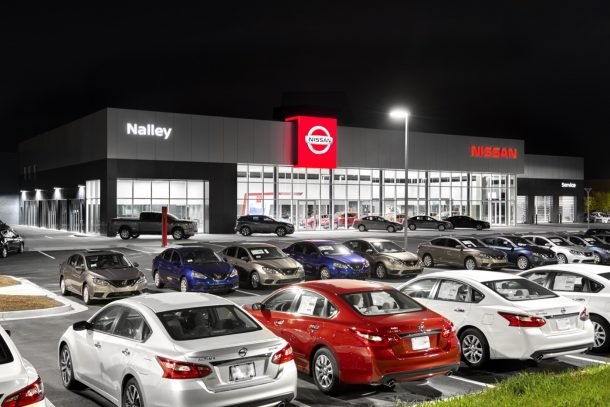














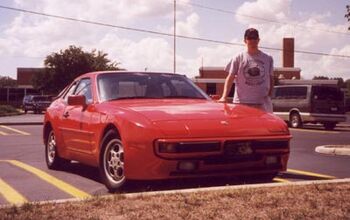
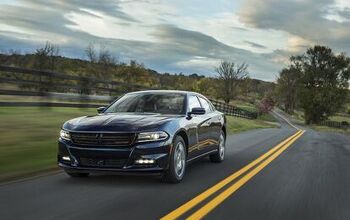



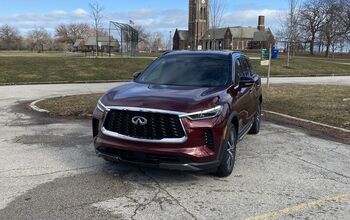
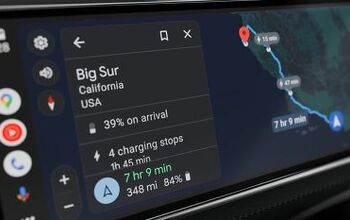




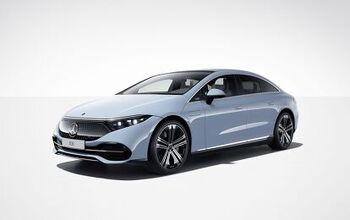

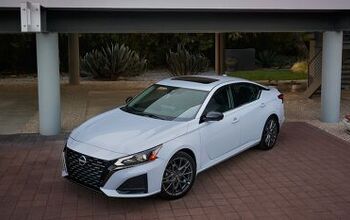

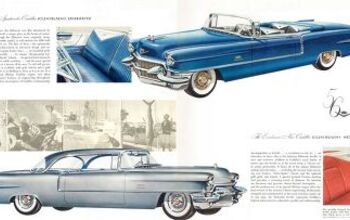

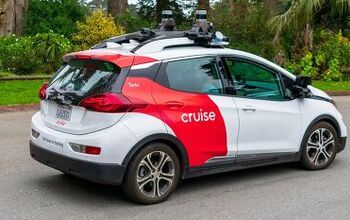
Comments
Join the conversation
I prefer to buy by surfing Craigslist and chatting friends and finding a relatively new car with a reliable reputation. Screw dealerships. If the pool's full of sharks, I find somewhere else to swim.
I dunno, my "path to the sale" involves reading Bring a Trailer every single day and occasionally having a moment of emotional weakness and financial strength at the same time. My rational decisions are reserved for cars that we buy for our business, which is usually pretty straightforwardly driven by TCO, which is largely driven by depreciation and financing cost.